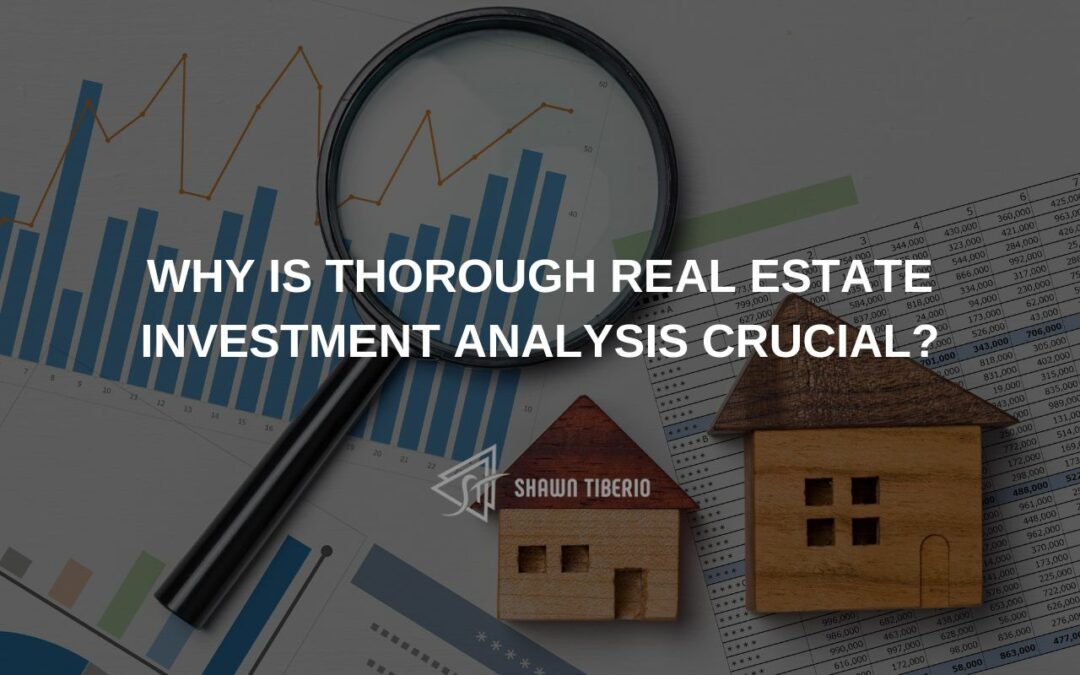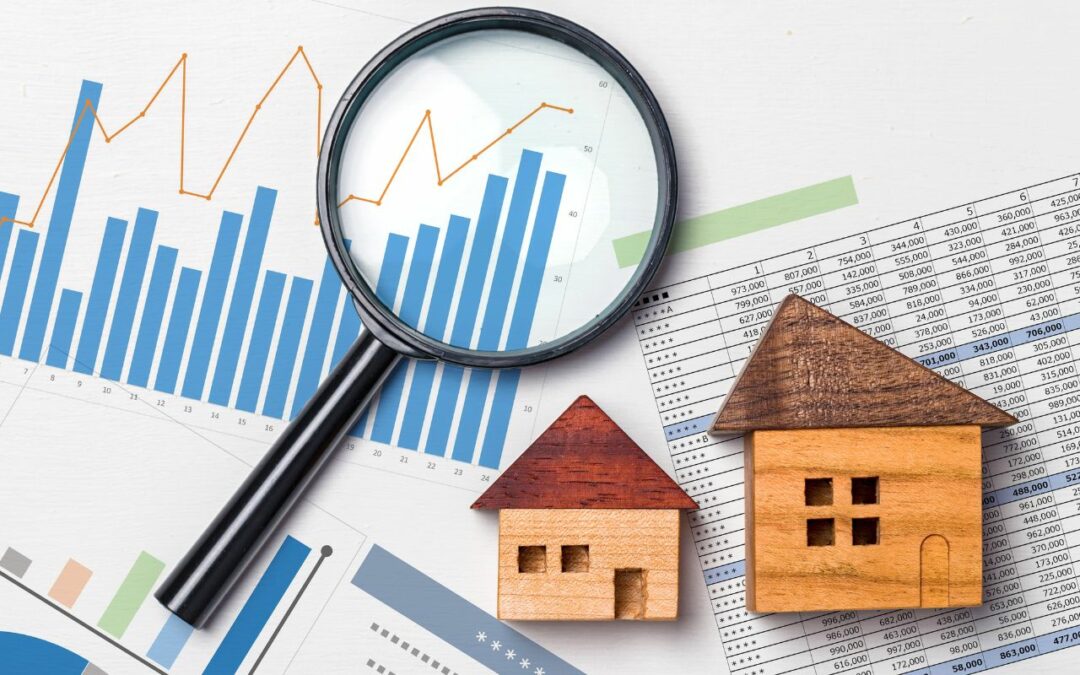Key Takeaways
- Conduct comprehensive market research and property identification to identify trends, demand drivers, and investment opportunities within the real estate sector.
- Perform financial analysis and due diligence to assess potential return on investment, evaluate cash flow, and review relevant documentation.
- Assess risks associated with the investment, both market-specific and property-specific, and implement risk mitigation strategies.
- Develop an exit strategy and make informed decisions based on market conditions, projected future income, and potential risks.
Market Research
Start by conducting a comprehensive market analysis to identify trends, demand drivers, and potential investment opportunities within the real estate sector. Data collection is crucial at this stage; gather information on the local economy, employment rates, population growth, and any upcoming developments or infrastructure projects. This will provide insight into market trends and potential areas for investment.
Additionally, understanding consumer behavior is key. Analyze demographics, income levels, and preferences to determine the type of properties that are in demand.
Once you have gathered the necessary data, it’s time to delve into competitive analysis. Identify existing real estate developments in the area and assess their performance. Look into their occupancy rates, rental or sale prices, and overall market positioning. This will help you understand the competitive landscape and identify any gaps or opportunities in the market.
Conducting surveys or interviews with local residents and real estate professionals can provide valuable qualitative insights into consumer behavior.
Understand what drives their decisions when it comes to real estate, whether it’s proximity to amenities, school districts, or public transportation. This information can help you tailor your investment approach to better meet the needs of potential buyers or renters.
Property Identification
Identifying potential properties for investment involves analyzing various factors such as location, market demand, and potential for value appreciation. When it comes to property identification, it’s crucial to conduct a thorough analysis to ensure a successful investment. Here are some key steps to consider when identifying properties for investment:
- Property Valuation Determine the current market value of the property by conducting a comparative market analysis. This involves looking at similar properties in the area that have recently sold to gauge the property’s potential value.
- Location Analysis Evaluate the neighborhood and its proximity to amenities such as schools, shopping centers, and transportation hubs. A property’s location can significantly impact its value and potential for rental income or resale.
- Market Demand Assessment Research the demand for properties in the area. Factors such as population growth, job opportunities, and development projects can influence the demand for real estate in a particular location.
Analyzing these factors will provide valuable insights into the potential of a property for investment.
Additionally, it’s essential to consider the property’s condition, potential for renovation or improvement, and any legal or zoning restrictions that may affect its use. By carefully assessing these aspects, you can make informed decisions when identifying properties for real estate investment.
Financial Analysis
Conduct a comprehensive financial analysis to assess the potential return on investment and the overall financial viability of the property. This step is crucial in determining the profit potential and ensuring the property aligns with your investment goals. One of the key elements of financial analysis is the cash flow analysis, which involves evaluating the inflows and outflows of cash associated with the property investment. This helps you understand how much cash the property will generate and how much will be required to maintain it.
The table below provides a breakdown of the key financial metrics to consider when conducting a financial analysis of a real estate investment:
| Financial Metric | Description |
|---|---|
| Net Operating Income | Calculated by subtracting operating expenses from the property’s gross operating income. |
| Cap Rate | Indicates the potential return on investment and is calculated by dividing the property’s net operating income by its current market value. |
| Cash on Cash Return | Evaluates the annual pre-tax cash flow relative to the total cash invested in the property. |
| Debt Service Coverage Ratio | Assesses the property’s ability to cover its debt obligations and is calculated by dividing its net operating income by its annual debt obligations. |
| Return on Investment | Represents the percentage return on the cash invested in the property and is calculated by dividing the property’s net profit by the total cash invested. |
Due Diligence
To ensure a comprehensive understanding of the property’s condition and potential risks, thoroughly examine all relevant documentation and conduct on-site inspections as part of the due diligence process. This critical research process involves delving into various aspects to mitigate potential risks and make informed investment decisions.
Here’s a breakdown of key steps to consider:
Economic Indicators Assessment
Examining key economic indicators is essential for gaining a comprehensive understanding of the local market’s financial dynamics and potential impact on real estate values. When assessing economic indicators for real estate market analysis, consider the following:
- Document Review:
- Obtain and review property surveys, titles, zoning documents, and any existing leases or contracts.
- Scrutinize financial records, including rent rolls, operating expenses, and historical income statements.
- Validate the property’s compliance with local regulations and codes.
- Physical Property Inspection:
- Engage professional inspectors to thoroughly examine the structural integrity, electrical and plumbing systems, and the overall condition of the property.
- Evaluate the property’s surroundings, accessibility, and potential environmental concerns.
- Consider hiring specialized inspectors for issues such as mold, asbestos, or pest infestations.
- Due Diligence Timeline:
- Establish a realistic timeline to complete all due diligence activities, ensuring ample time for thorough investigations.
- Coordinate with relevant stakeholders, including sellers, agents, and inspectors, to streamline the process and address any emerging concerns promptly.
- Keep meticulous records of all findings and correspondence to inform your investment decisions effectively.
Risk Assessment
After thoroughly examining all relevant documentation and conducting on-site inspections as part of the due diligence process, you now need to assess the potential risks associated with the property investment. Risk evaluation is a crucial step in real estate investment analysis as it allows you to identify and understand the various factors that could impact the success of your investment.
Start by evaluating the market risk, which includes factors such as economic conditions, market trends, and competition. Understanding these elements will help you gauge the potential for property value fluctuations and rental income stability.
Next, consider the property-specific risks such as physical condition, occupancy rates, and potential maintenance costs. This assessment will give you a clear picture of the immediate challenges and opportunities associated with the property.
Additionally, it’s essential to assess the financial risks, including interest rate fluctuations, financing options, and overall leverage. Understanding these financial aspects will help you make informed decisions regarding the funding and management of your investment.
Furthermore, investment diversification is a critical strategy for risk management. Diversifying your real estate portfolio across different property types and locations can help mitigate the impact of market-specific risks and economic fluctuations. By spreading your investments, you can reduce the overall risk exposure and enhance the potential for consistent returns.
Exit Strategy Planning
When considering exit strategy planning for your real estate investment, it’s essential to thoroughly analyze market conditions and potential future scenarios to make informed decisions about the timing and method of your exit. This process involves careful consideration of various factors to ensure profit maximization and successful asset liquidation.
Here are key steps to consider for effective exit strategy planning:
- Market Analysis: Evaluate current market trends and forecasts to determine the optimal time for your exit. Consider factors such as supply and demand dynamics, interest rates, and economic indicators that could impact property values.
- Cash Flow Assessment: Analyze your investment’s cash flow and projected future income to assess its potential for generating returns over time. This evaluation will help determine the most financially beneficial timing for your exit.
- Risk Mitigation Strategies: Identify potential risks that could affect your investment’s value and develop contingency plans to mitigate these risks. This could involve diversifying your real estate portfolio, securing long-term leases, or structuring the investment to minimize potential downsides.
Investment Decision Making
When making investment decisions for real estate, it is imperative to conduct thorough analysis and meticulous evaluation of various factors to ensure informed and strategic choices. Data analysis and risk management play crucial roles in this process. Here’s a breakdown of key steps to consider when making investment decisions:
| Key Steps for Investment Decision Making | Description |
|---|---|
| Comprehensive Data Analysis | Utilize historical sales data, rental rates, market trends, and demographic information to identify potential investment opportunities. Conduct thorough comparative market analysis to assess the property’s value and potential returns. |
| Risk Assessment and Management | Evaluate both internal and external risks associated with the investment, such as market volatility, property condition, and financing. Implement risk mitigation strategies to safeguard your investment and maximize potential returns. |
| Financial Analysis and Projections | Develop detailed financial projections, including cash flow analysis, operating expenses, and potential appreciation. Consider various financing options and assess the impact of interest rates on the investment’s overall profitability. |
Performance Monitoring
To effectively monitor the performance of your real estate investments, it’s essential to establish key performance indicators and regularly analyze operational and financial metrics. This allows you to track the progress of your portfolio and make informed decisions for effective risk management.
Here are some key steps to consider for performance monitoring:
- Portfolio Tracking: Implement a robust system for tracking the performance of each property in your portfolio. This includes monitoring rental income, occupancy rates, property appreciation, and overall cash flow. By closely following these metrics, you can identify underperforming assets and take corrective actions to enhance their performance.
- Risk Management: Regularly assess the risks associated with your real estate investments. This involves evaluating factors such as interest rate fluctuations, market volatility, and potential changes in local regulations. By staying vigilant and proactive in managing these risks, you can safeguard your investments and mitigate potential financial losses.
- Investment Evaluation and Benchmarking Performance: Compare the performance of your real estate investments against industry benchmarks and established targets. This allows you to gauge how well your portfolio is performing relative to the market and helps in identifying areas that require improvement. Additionally, conducting thorough investment evaluations enables you to make data-driven decisions and optimize the overall performance of your real estate assets.
Frequently Asked Questions
How Can I Determine the Potential Impact of Local Zoning Changes on My Real Estate Investment?
What Are Some Strategies for Mitigating the Risks Associated With Environmental Contamination on a Potential Property?
What Factors Should I Consider When Evaluating the Potential Impact of Natural Disasters on a Real Estate Investment?
When evaluating the potential impact of natural disasters on a real estate investment, there are several factors to consider.
First, it is important to assess the natural disaster risk specific to the property’s location. This includes evaluating the frequency and severity of past natural disasters in the area. By understanding the history of natural disasters in the area, you can better gauge the likelihood of future events and their potential impact on the property.
Next, it is crucial to evaluate the property’s resilience to withstand potential natural disasters. This includes assessing the construction materials used, the property’s proximity to hazardous areas, and any existing mitigation measures in place. A property that is built to withstand natural disasters will likely have a lower risk of damage and higher potential for long-term value.
Another important consideration is the insurance coverage available for the property. Adequate insurance coverage can provide financial protection in the event of a natural disaster. It is essential to review the policy and ensure that it covers the specific risks associated with the property’s location.
Additionally, it is crucial to analyze the market demand in the area post-disaster. Natural disasters can significantly impact the local economy and housing market. By understanding the potential impact on property value and rental income, you can make a more informed decision about the investment’s long-term viability.
How Can I Assess the Potential Impact of Changing Interest Rates on My Real Estate Investment Over Time?
Assessing market trends is crucial for your real estate investment. Keep an eye on economic forecasting, as changing interest rates can significantly impact your investment over time.
Analyze how different interest rate scenarios could affect your property’s value, financing costs, and rental income. Consider consulting with financial experts to understand the potential implications and develop strategies to mitigate risks associated with fluctuating interest rates.
What Are Some Key Indicators to Monitor in Order to Assess the Long-Term Performance of My Real Estate Investment?
To assess the long-term performance of your real estate investment, it’s crucial to monitor market trends and economic indicators.
Keep an eye on factors like population growth, job market stability, and local development projects.
Additionally, observe overall market trends such as supply and demand, vacancy rates, and rental prices.
Final Thoughts
Now that you’ve completed the real estate investment analysis, remember that 90% of millionaires have been created by investing in real estate. By following these 8 key steps, you can make informed decisions and maximize your investment potential.
Keep a close eye on market trends and performance to ensure your investment continues to grow. Good luck on your real estate investment journey!














